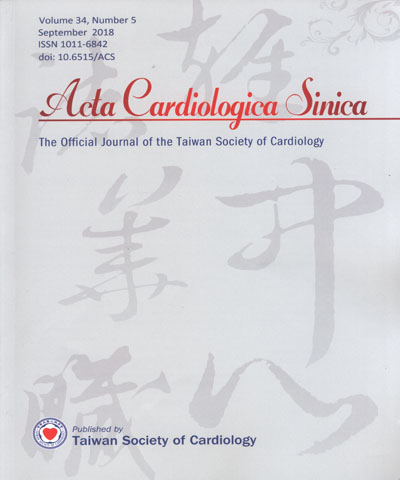
Acta Cardiologica Sinica
中華民國心臟學會,正常發行
選擇卷期
- 期刊
Background: Oral and intravenous gabapentin can markedly attenuate blood pressure (BP) in hypertensive rats. The nucleus tractus solitarii (NTS) is the primary integrative center for cardiovascular control and other autonomic functions in the central nervous system. However, the signaling mechanisms involved in gabapentin-mediated cardiovascular effects in the NTS remain unclear. We investigated whether the nitric oxide synthase (NOS) signaling pathway was involved in gabapentin-mediated BP regulation in the NTS of spontaneously hypertensive (SHR) rats. Methods: SHR rats were anesthetized with urethane at age 10-12 weeks. Arterial pressure and heart rate (HR) were monitored through a femoral artery catheter. For stereotaxic intra-NTS microinjection, the dorsal surface of the medulla was exposed by limited craniotomy. We observed that unilateral microinjection of gabapentin into the NTS whether to change dose-related BP and HR. Then, unilateral microinjection of gabapentin into the NTS before and after N(ω)-nitro-L-arginine methyl ester (L-NAME) treatment whether to change blood pressure and heart rate. Results: Unilateral microinjection of gabapentin into the NTS produced prominent dose-related depressor and bradycardic effects in SHR rats. The cardiovascular effects of gabapentin were attenuated by the prior administration of the NOS inhibitor, L-NAME. Conclusions: Gabapentin modulated central BP and HR control in the NTS of SHR rats in this study through NOS signaling.
- 期刊
Background: Gout is the most common inflammatory arthritis in adult males. Patients with gout are at a higher risk of coronary heart disease (CHD). This study aimed to investigate the correlation between gout and CHD. Methods: This was a retrospective cohort study that used data from the Longitudinal Health Insurance Database of Taiwan. The study subjects were 46,140 patients with new-onset gout during 2003-2010. To avoid selection bias, we used propensity score matching. A Cox proportional hazard model was used to analyze differences in the risk of CHD between patients with and without gout after controlling for related variables. Results: The patients with gout had a higher risk of CHD than the patients without gout [adjusted hazards ratio (HR) = 1.34, 95% confidence interval (CI): 1.23-1.45]. The risk of CHD increased with older age. Other related factors for CHD included gender (female vs. male, adjusted HR = 0.86, 95% CI: 0.79-0.93), hypertension (adjusted HR = 1.53, 95% CI: 1.42-1.65), hyperlipidemia (adjusted HR = 1.18, 95% CI: 1.07-1.29), and diabetes mellitus (adjusted HR = 1.24, 95% CI: 1.13-1.36). Conclusions: We found correlations between gout and CHD and other influencing factors including hypertension, hyperlipidemia, and diabetes mellitus. We also found that gender and age were associated with CHD.
- 期刊
Background: p-Cresylsulfate (PCS) is a protein-bound uremic toxin that accumulates in patients with chronic kidney disease. Previous studies have indicated that serum total PCS levels are significantly increased in the presence of abnormal corrected QT (QTc) intervals, and that they are associated with QTc prolongation. However, the QTc prolongation effect of PCS remains unclear. The current study aimed to investigate the arrhythmogenic effect of PCS using in vitro experiments and computer simulation. Methods: The arrhythmogenic effect of PCS was evaluated by incubating H9c2 rat ventricular cardiomyocytes in vitro with increasing concentrations of PCS. Electrophysiological studies and mathematical computer simulations were performed. Results: In vitro, the delayed rectifier potassium current (I_K) was significantly decreased in a dose-dependent manner after treatment with PCS. The modulation of PCS on I_K was through regulation of the phosphorylation of the major potassium ion channel protein Kv2.1. In computer simulations, the decrease in I_K induced by PCS prolonged the action potential duration (APD) and sped up the re-entrant wave, which is known to be a trigger mechanism for lethal ventricular arrhythmias. Conclusions: PCS significantly downregulated the phosphorylation of the I_K channel protein Kv2.1 and I_K current activity, which increased the cardiomyocyte APD. This was observed both in vitro and in the computer O'Hara-Rudy dynamic human ventricular model. These findings suggest that PCS may play a key role in the development of cardiac arrhythmias.

